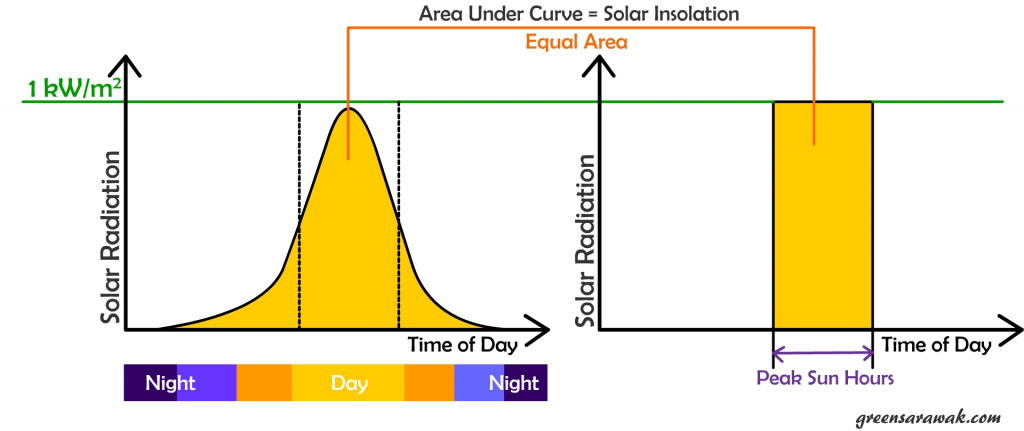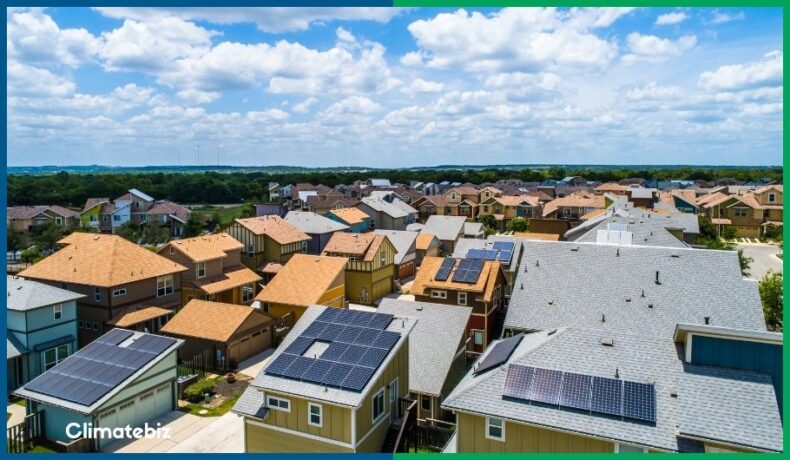The Lone Star State continues to be one of the leading solar-powered states in the U.S. It’s, therefore, only natural that homeowners in this region are curious about the cost of solar panels in Texas.
Several variables affect solar panel cost. As such, the answer to this question isn’t as straightforward as you would like it to be.
To accurately determine solar panel prices, you must factor in panel brand and type, installation charges, and more.
In this article, we cover the relevant factors affecting the cost of solar panels in Texas and help you gauge whether such an investment will provide you with worthwhile returns.
Table of Contents
How Much Do Solar Panels Cost In Texas?
According to Solar Energy Industries Association (SEIA), Texas ranks no. 2 in the top 10 solar states in the country. The state has around 14 GW installed capacity across almost 1.7 million households.
The table below provides average cost estimates for the following solar panel system sizes in Texas:
| System Size | Cost |
|---|---|
| 3 kW | $8,190 |
| 4 kW | $10,920 |
| 5 kW | $13,650 |
| 6 kW | $16,380 |
| 10 kW | $27,300 |
Please note: the above example does not include the federal tax credit.
Federal Tax Credit
Now deduct 30% in investment tax credit (ITC) or federal tax credit that will be available to all solar panel investors till 2033, after which it falls to 26%. This incentive is also why most of these solar panel investments come from Utility sectors rather than the residential sector.
The federal tax credit covers the following:
- Cost of solar panels and sales taxes
- Cost of solar equipment, i.e., inverters, batteries, wiring, and structural mounts
- All costs associated with solar panel installation
The tax credit can be carried forward to the next year if the credit exceeds the amount owed taxes for the year. So, it’s a good option for those who will have to pay lower taxes this year, as tax credit can also be used in the coming years.
| System Size | Cost After ITC |
|---|---|
| 3 kW | $5,740 |
| 4 kW | $7,644 |
| 5 kW | $9,555 |
| 6 kW | $11,470 |
| 10 kW | $19,110 |
A Step-By-Step Guide To Costing
Now it’s time to help you determine the correct size solar system for your needs.
Determine Your Energy Needs

Source: MoxieSolar
First, refer to your utility bill — add your energy usage over the past 12 months.

Second, factor in your location and the amount of solar irradiance it receives.
The Peak Sun Hour (PSH) method is an easy way to do this.
1 PSH is 1000 W/m² of sunlight per hour, where irradiance averages 1000W (energy) per square meter. For Texas, this number is 4.8 hours.
Using the peak sun hour method, you can estimate your system requirement.
Rated System Power Output (kW) = estimated Annual Energy (in kWh) / (4.8 PSH hours x 365 days)
Rated System Power Output (kW) = estimated Annual Energy (in kWh) / 1,752 Annual PSH hours)
Working Example:
Based on Energy sage’s average annual energy consumption of 18,312kWh, a Texan homeowner would require the following system:
18,312/(4.8 x 365) = 10.45 ~ 10.5 kW system with a 10 kW solar inverter.
Use the above method to determine your household’s system requirements.
Solar Panel Type And Brand
Knowing your system requirements, you can move to the next step — solar panel selection.
Solar panel selection is an essential aspect of how your system will turn out in terms of cost and longevity of the project.
Solar panel brand and SKU selection play a pivotal role in the cost of the whole solar panel selection process, with SunPower solar panels starting at $3.3 /watt and going up to $4.2 /watt while Tesla is selling at $2.44 /watt.
Thankfully, our experts have already penned the following articles to help you along the way:
Working Example:
Using the same working example, a 10.5 kW solar panel system in Texas would cost the following:
- Average Texan system: (@2.73 $/Watt) = $28,655 = $20,070 (after ITC)
- SunPower system: (@3.3 $/Watt) = $34,650 = $24,255 (after ITC)
- Tesla system: (@2.44 $/Watt) = $25,620 = $17,935 (after ITC)
Are Solar Panels In Texas Worth it?
In short — absolutely!
But don’t just take our word for it. It’s essential to look at the facts.
So what factors determine whether solar panels are worth it in Texas? They are:
- Annual utility bill savings
- Payback period
- Return On Investment (ROI)
Please note: homeowners can also install grid-tied systems and use methods such as net-metering to increase their savings.
Let’s look at each of these individually:
Will A Home In Texas Save Money With Solar Panels?
Money saved through installing solar panels results from utility bill savings and tax credits.
Let’s apply these factors to an example:
Working Example
Let’s look at a 10kWh system as an example of savings.
An average solar panel system in Texas costs $27,300 or 2.73 $/Watt)$27,300. Deduct the tax credit of $8,190, and the cost will be reduced to $19,110.
Now, let us look at how much energy this system will produce.
A 10 kW will produce 17,520kWh at an annual outlay of $2,304 (13.15 ¢/kWh). Although this is lower than the national average, you will save up to $2,304 annually. Additionally, considering the rates increase based on inflation, we can safely say the savings will grow.
Furthermore, on average, solar panels have a 25-year lifespan with an annual reduction in electricity production of ~1%.

Solar Panels ROI In Texas
Return on investment is a metric that measures the net return of an investment in percentage terms:
Return on Investment (ROI) = Net Return / Solar Panel Cost In Texas x 100
To determine your ROI, multiply your monthly savings by 12 to get annual savings, and then multiply that figure by 25 years (average solar panel life).
Next, you subtract the initial investment to get to your net returns.
Now divide the number by the out-of-pocket solar panels cost in Texas.
Your final figure is your ROI.
Working Example
Let’s use a 10kWh system as an example to calculate ROI. Using the same cost of $27,300 (2.73 $/Watt).
The out-of-pocket solar panels cost in Texas comes out to be $19,110 (deduct the 30% ITC).
The 25 years of savings will be $192 (monthly savings) x 12 (months/years) x 25 (lifetime) = $57,600. So, the ROI comes to:
Return on Investment (ROI) = (57,600 – 19,110) / 19,110 x 100 = 201%
Payback Period Of Solar Panels In Texas
The payback period is a metric used to make investment decisions based on the years required to recover the cost of the solar panels.
As you can see from the above graph, the solar panel system pays off all the investment costs within the first nine years.
Working Example
The payback period is a straightforward calculation where you calculate the time it takes an investment to return your money and provide you with a net benefit.
An easier way to look at it is using the cost of the solar panels, i.e., $19,110, and dividing it by annual savings of $2,303.
In the end, you get 8.3 years, the payback period for a 10.5 kW solar system.
Final Thoughts
While determining the cost of solar panels in Texas may not seem as straightforward as you may have thought, it doesn’t have to be an impossible task.
Our easy-to-follow, step-by-step process will aid you in establishing reasonable cost estimates associated with your desired system.
Finally, while it can take some time to recuperate the cost of your investment, it is still worth it in the end!
Should you have any further questions on this topic, please feel free to reach out to us on our community page or in the comment section!

